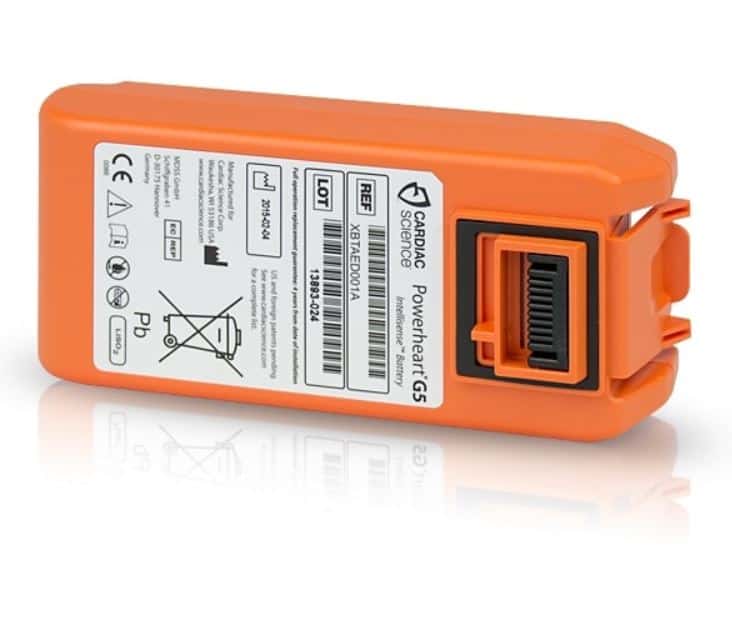An AED (automated external defibrillator) is a life-saving device which can be used by the general public when someone suffers cardiac arrest. Also known as a heart attack, over 350,000 people in the USA will suffer from cardiac arrest each year.
It is likely that you have seen AEDs attached to walls in public places such as offices or shopping centers. The key benefit of AEDs is that you need no medical expertise to use one – the defibrillator will be able to determine whether or not the person’s heart rhythm requires an electric shock to be given.
The electric shock delivered by the AED works to restore regular heart rhythm in the person suffering cardiac arrest.
How long do AED batteries last?
AEDs run on batteries which tend to last an average of around four to five years, with a general life expectancy between two and seven years depending on the brand. Their maximum lifespan can be achieved with regular checkups on the battery health.
To ensure that the AED will be available when needed, frequent inspection is crucial. Some AED brands come with a self-regulatory function which alerts the user when a battery needs replacing. If you need to conduct a manual inspection, there should be clear instructions that accompanied the AED when you received it.
If you are able to gain access to the battery, it typically has a printed expiration date.
Be careful not to confuse this with the ‘install by’ or ‘manufacture’ date.
If the AED battery should hold an expiration date, take note of it and ensure that you replace the battery before this date.
How to replace an AED battery
If your manual inspection has shown that the battery needs replacing, or the AED itself has alerted you to this, be sure to follow these steps:
- Check the underside or sides of the AED to find the battery compartment. It will usually become loose by clicking a button or removing a clip.
- Remove the old battery and replace it with a new one. Ensure that it fits properly and clicks into the same position as the old one. New AED batteries cost between $100-$300 depending on the brand.
- Ensure that the AED is in working condition after you insert the new battery.
Recycling old AED batteries
An important thing to remember after replacing your AED battery is that the old one must be recycled appropriately.
AED batteries are lithium-sulfur batteries and are classified as a hazardous waste material. Therefore, they are not fit to be thrown in the trash.
Due to the presence of reactive lithium-sulfur dioxide, AED batteries that do end up in the trash are likely to ignite fires if they come into contact with a heat source or physical pressure.
The only safe way to dispose of an old AED battery is to transport it to a recycling plant. Some accepted providers of battery recycling services include the Battery Recyclers of America and Terracycle.
The former provides a free on-site pickup for collections of batteries weighing less than 500lbs, and is even known to offer cash for old batteries.
—
In short, AED batteries can serve their purpose for several years, but must be replaced according to expiration and recycled appropriately.
It is dangerous to dispose of old AED batteries as regular trash. If you’re unsure of how to dispose of it, contact your AED provider.




